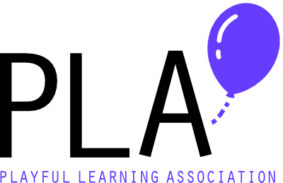Building Virtual Communities with Gather Town: A Playful Approach to Professional and Academic Engagement
Corresponding Author: Anshul Lau
All authors:
Length: 60 minutes
Location:
Description:
In today’s rapidly evolving digital landscape, fostering meaningful connections and community building, particularly in professional and academic settings, poses a unique challenge. The quest for interactive and engaging platforms for professional networking and student collaboration has led to innovative solutions. One such groundbreaking tool is Gather-Town (Gather), a web-conferencing platform that reimagines virtual interactions through the lens of 1980s pixelated 2D video games. This session aims to illuminate Gather’s potential in revolutionising professional networking and student collaboration.
Gather stands out with its unique blend of nostalgic gaming aesthetics and advanced video communication technology. The platform allows users, represented as avatars, to navigate custom virtual spaces, engaging in conversations and interacting with various elements like documents, media, and links. This immersive experience transcends the limitations of traditional video conferencing, fostering a more natural and dynamic form of interaction.
In professional contexts, Gather has shown remarkable potential as a networking tool. It allows professionals to establish and nurture connections in an environment that closely mimics the spontaneity and richness of face-to-face interactions, an essential aspect often lost in conventional remote work setups. This platform creates an engaging virtual space conducive to building and maintaining robust professional relationships and fostering collaborative projects.
For educational purposes, Gather presents an innovative avenue for student engagement and collaboration. It effectively addresses the challenge of isolation in online learning by offering a virtual campus-like experience. Students can interact informally with peers and instructors, engage in group activities, and participate in collaborative learning experiences, thereby enriching their academic journey. The platform’s design flexibility enables educators to create customised learning environments, catering to diverse educational needs and preferences.
Gather’s user-friendly interface and proximity-based interaction model enhance its accessibility and appeal. Participants can freely move in 2-D spaces, access private rooms for focused discussions, collaborate on shared documents, and utilise various interactive tools. The platform’s free access for up to ten participants in any space, coupled with its unlimited space creation capability, makes it a practical and scalable solution for diverse settings.
The effectiveness of Gather in various professional and educational contexts, including conferences and workshops, highlights its versatility and potential as a transformative tool. While the research on its educational application is still evolving, its early adoption in various settings suggests a promising future for synchronous and asynchronous learning models. Gather can foster a sense of community among learners, promoting peer interaction and identity formation, while also accommodating self-directed learning approaches.
This session will feature an interactive demonstration of Gather, providing attendees with a hands-on experience of its innovative features. Participants will explore the platform’s customisability, user engagement mechanics, and its adaptability to different professional and educational scenarios.
In summary, this presentation will explore the innovative capabilities of Gather in transforming professional networking and student collaboration. Attendees will leave with a deep understanding of how this dynamic platform can be utilised to enhance virtual connections and collaborations, offering a forward-looking perspective on digital engagement in professional and academic contexts.
References, web links and other resources:
Al-Samarraie, H. (2019) ‘A Scoping Review of Videoconferencing Systems in Higher Education: Learning Paradigms, Opportunities, and Challenges.’ International Review of Research in Open and Distributed Learning, 20(3), 1-19. Available at: https://files.eric.ed.gov/fulltext/EJ1223628.pdf.
Fisher, J.B., Keenan, T.F., Buechner, C., Shirkey, G., Perez-Quezada, J.F., Knox, S.H., Frank, J.M., Runkle, B.R.K., and Bohrer, G. (2021) ‘Once upon a time, in AmeriFlux.’ Journal of Geophysical Research: Biogeosciences, 126: e2020JG006148. Available at: https://agupubs.onlinelibrary.wiley.com/doi/epdf/10.1029/2020JG006148.
Hilsdon, J. (2014) ‘Peer learning for change in higher education.’ Innovations in Education and Teaching International, 51(3), 244-254. Available at: https://www.tandfonline.com/doi/abs/10.1080/14703297.2013.796709.
Samiei, M., Weis., C., Schiavo, L., Chavdarova, T. and Yousefi, F. (2020) ‘Convening during COVID-19: Lessons learnt from organizing virtual workshops in 2020.’ arXiv:2012.01191v1. Available at: https://arxiv.org/pdf/2012.01191.pdf.
Themeli, C. and Bougia, A. (2016) ‘Tele-proximity: Tele-community of Inquiry Model. Facial Cues for Social, Cognitive, and Teacher Presence in Distance Education.’ International Review of Research in Open and Distributed Learning, 17(6), 145-163. Available at: http://www.irrodl.org/index.php/irrodl/article/view/2453/3950.
